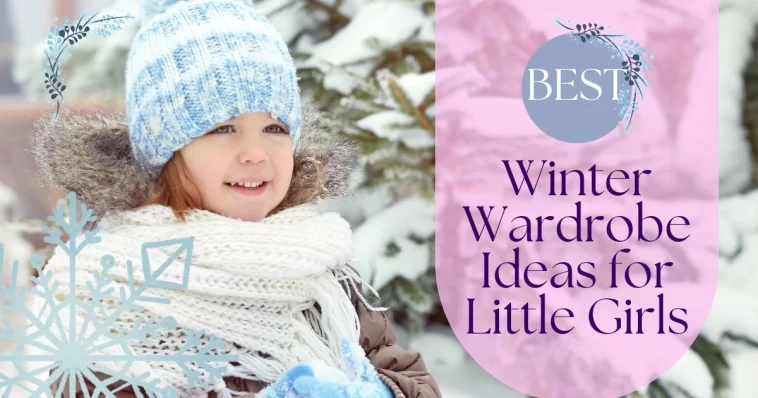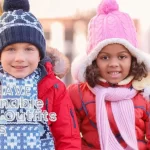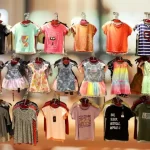Winter dressing for little girls should do three things at once. It should keep them warm, allow them to move and play, and look cute enough to make getting dressed feel like a small celebration. In 2025, the best kidswear blends function with playful style. This article walks you through practical layering, current color and knit trends, smart shopping choices, and outfit examples you can copy or adapt. It also includes tested brand picks and real-world tips so you can build the best winter wardrobe that lasts the season and keeps mornings simple.
Start with a Simple Layering System
The easiest way to style winter looks that actually work is to think in layers: base layer, mid layer, outer layer, and accessories. This approach keeps kids warm without bulk and helps you mix and match for different temperatures and activities.
Base Layers
Base layers sit next to the skin. Choose breathable materials that wick moisture. Merino wool and technical synthetics are both excellent choices. Merino regulates temperature, resists odor, and still warms when damp, making it great for active kids. For cold days, pick a midweight base. For milder winter weather, a lightweight top and leggings will do. Practicality matters here. If the base layer is scratchy or tight, your child will fight you every morning.
Mid Layer
The mid layer provides insulation. Think fleece sweaters, quilted vests, or a soft knit sweater. A fleece hoodie gives warmth and easy layering, while a cardigan adds a slightly dressier look for photos or family events.
Outer Layer
The outer layer protects from wind and wet snow. Choose waterproof or highly water-resistant shells for snowy climates. For drier, cold winters, a down or synthetic puffer keeps heat in and looks instantly cozy. The key is to make sure zippers, cuffs, and hoods are snug enough to stop drafts without compromising mobility.
Trends to Use as Styling Cues in 2025
This winter, children’s wardrobes are balancing quiet, grown-up colors with bright pops. Earth tones like warm browns, soft beige, and forest green are trending and pair especially well with cozy textures. At the same time, bright berry red, cobalt blue, and playful prints are popular for adding personality and making kids easy to spot on a playground. Consider a neutral coat that works with dresses and jeans, then add bold hats and mittens to brighten the outfit.
Knitwear is experiencing a resurgence. Chunky knits, coordinated sweater sets, and clever knitted accessories that function as both scarf and collar are in style. These knit pieces are perfect mid layers and photograph well without being fussy. Look for durable yarns and tight stitching so the piece holds up to washing and active play.
Styling Templates You Can Use
Below are practical outfit templates organized by activity. Each is easy to adapt and quick to put together on busy mornings.
Casual Outdoor Play
- Merino or synthetic long-sleeve base top and leggings.
- Fleece mid-layer.
- Waterproof puffer or shell coat.
- Insulated waterproof boots and wool socks.
- Knit hat with ear coverage and touchscreen-friendly mittens for caregivers who need to pay with a phone.
School Day, Cozy but Neat
- Cotton dress or corduroy skirt layered over a merino long-sleeve top.
- Lightweight quilted vest.
- Tights or thick leggings.
- Chelsea boots or insulated suede boots.
- A small crossbody or backpack to balance the look.
Family Photos or a Formal Gathering
- Tweed skirt or pleated dress with a Peter Pan collar top.
- Classic pea coat or tailored wool blend coat.
- Opaque tights and leather ankle boots.
- Hair ribbon or a simple knit beret for a timeless finish.
Travel or Mixed Climates
- Thin merino base layer under a sweater.
- A packable down jacket for warmth that compresses into a backpack.
- Slip-on boots for airports and easy on and off during security checks.
Product and Brand Picks Parents Keep Talking About in 2025
When shopping, aim for brands that combine performance with kid-friendly sizing and easy care. Below are widely recommended names and why they stand out this year.
Base Layers and Thermals
- Smartwool and REI Co-op. Both make merino and synthetic base layers sized for kids that balance warmth, breathability, and durability. These are especially good for active days and skiing. Smartwool is frequently praised for softness and longevity.
- Woolino and similar merino brands. Great for toddlers and young children who need gentle, all-season temperature control. Woolino items often come in sweet prints and are easy to layer.
Winter Boots That Actually Keep Feet Warm
- Merrell Snow Quest and Merrell Snow Quest Lite. These boots offer solid traction, comfort, and insulation in real-world tests. They are a reliable all-around pick for snowy play and winter walking.
- Kamik SnoBusters. Known for heavy-duty waterproof construction and removable liners. They tend to handle slush, deep snow, and muddy playgrounds well.
- Hunter kids’ snow boots and other rubber shaft options are handy for building snowmen and for wet conditions. They are both waterproof and easy to hose off after messy play.
Outerwear and Versatile Pieces
- Look for waterproof shells from outdoor brands like REI Co-op or durable puffers from mainstream kids’ brands. A mid-length puffer in a neutral tone works across dresses and jeans. Many reviewers this season recommend parkas with removable liners for changing temperatures.
Knitwear and Styling Pieces
- Small boutique kidswear and mainstream kids retailers are both offering coordinated sweater sets and knitted accessories. Choose items with reinforced seams and washable fiber blends to survive active use and laundering. Trend stories recommend simple, classic silhouettes that can be dressed up or down.
How to Mix Color and Pattern Without Overwhelm
Start with a grounding neutral. Use the coat or boots as your base. For example, a beige or olive coat pairs with almost any outfit. Add a single bright accessory, such as berry-colored mittens or a cobalt hat, to lift the palette. If you want to use patterns, place them in a single layer. A floral dress with a solid coat reads cleaner than combining floral with stripes and plaids.
For visibility and safety, reflective trims and bright accents are a small win. Many modern kids’ coats and gloves include reflective tabs, which help during short winter daylight hours.
Practical Care and Sizing Tips
Sizing up is often the right choice for outerwear. Children grow fast, and thicker layers like sweaters and snow pants need room to grow. If you plan to reuse outerwear next season, choose a coat with adjustable cuffs and a little room in the shoulders.
Avoid bulky washing instructions. Many kids’ clothes should be washed on a gentle cycle and air-dried, but look for pieces labeled machine washable. Merino items often benefit from air drying or a low heat setting. Check removable liners and follow the washing instructions on the label for insulation integrity.
Repair is part of sustainability. Keep a small sewing kit and reinforced knee and elbow patches on hand. Patching extends garment life and keeps favorite items wearable for seasons.
Dressing Tips for Toddlers and Small Children
Simplicity wins for little children who cannot help with zippers. Use wide two-way zippers, magnetic buttons, or snaps where possible. Layer with convenience in mind. For infants and toddlers, one-piece fleece suits or bunting with back zippers prevent drafts.
Boots with velcro straps or roomy pull tabs make quick outfit changes possible. If your child hates hats, try a knitted hoodie that is part of the mid layer, so warmth is kept without a separate hat to fight over.
Budget-Friendly and Sustainability Notes
You do not need to spend a fortune to dress for winter. Look for end-of-season sales and consider secondhand markets for kids’ outerwear. Coats and boots often survive multiple children, so high-quality used options can be an excellent value.
When possible, choose durable fibers and classic silhouettes. A well-made coat in a neutral color will be easier to pass on and more likely to be worn often.
Photo-Worthy Outfit Ideas Parents Will Copy
- Neutral long puffer, white cable knit sweater, corduroy skirt with tights, and leather ankle boots. Add a velvet hair bow for a touch of charm.
- Forest green wool coat, cream merino base, pleated dress, knee-high knit socks, and suede boots. Finish with a knit beret for old-time sweetness.
- Bright berry parka, patterned snow pants, thermal base, and heavy-duty snow boots. Add a playful pom beanie and waterproof mittens for a cheerful look.
Final Checklist for Every Winter Wardrobe
- At least one merino or technical base layer top and bottom.
- A fleece or knitted mid-layer that can be worn alone indoors.
- A waterproof or water-resistant outer shell plus an insulated puffer for very cold days.
- Insulated, waterproof boots and replaceable liners if you live somewhere snowy.
- Wool or wool blend socks and at least one pair of everyday cotton socks.
- A couple of hats, mittens or gloves, and a scarf or neck warmer.
- Care items: stain remover, sewing kit, spare zipper pulls.
Quick Shopping Plan to Make Mornings Easier
- Pick a neutral coat that fits with dresses, jeans, and skirts.
- Buy two base layer sets per child so one can wash while the other is worn.
- Get one sturdy pair of winter boots and one pair of casual boots for school.
- Add two knit accessories that your child loves. If it is beloved, they will keep it on.
Building the Best Winter Wardrobe for Little Girls
Styling winter clothes for little girls in 2025 is as much about function as it is about joy. Use a simple layering system as your foundation. Add a few trend-forward pieces like coordinated knits or earth-tone coats. Invest in quality base layers and boots that keep children comfortable. With these pieces, you can mix and match to create warm, practical, and very cute looks.



